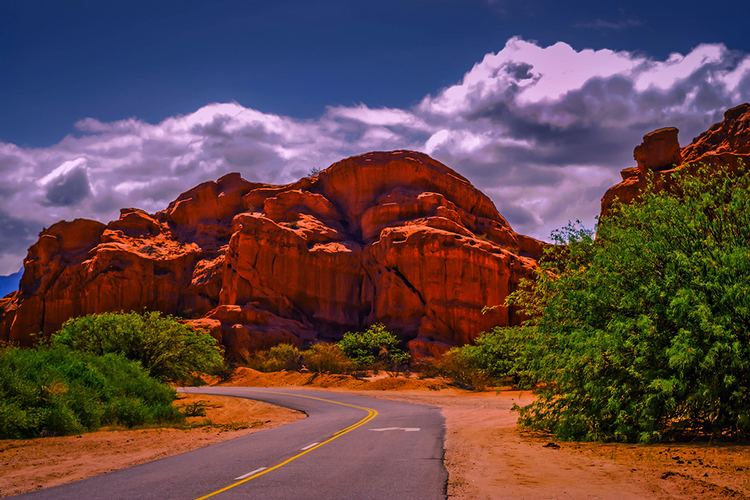Time zone ART (UTC-3) Dialing code +54 3868 Elevation 1,683 m Local time Monday 1:23 AM | Department Cafayate CPA base A4427 Climate BWk | |
 | ||
Weather 18°C, Wind N at 6 km/h, 84% Humidity Points of interest Museo de la Vid y el Vino, Bodega Nanni, Bodega Domingo Hermanos, Bodega El Tránsito, Museo Arqueológico Rodolfo I | ||
Argentina s northwest things to do in salta cafayate purmamarca
Cafayate ([kafaˈʒate]) is a town located at the central zone of the Valles Calchaquíes in the province of Salta, Argentina. It sits 1,683 metres (5,522 ft) above mean sea level, at a distance of 189 kilometres (117 mi) from Salta City and 1,329 kilometres (826 mi) from Buenos Aires. It has about 12,000 inhabitants (2001 census ).
Contents
- Argentina s northwest things to do in salta cafayate purmamarca
- Map of Cafayate Salta Province Argentina
- Cafayate salta province argentina
- Etymology
- Wines
- Valles Calchaques
- References
Map of Cafayate, Salta Province, Argentina
The town is an important tourist centre for exploring the Calchaquíes valleys, and because of the quality and originality of the wines produced in the area. The largest golf course in South America, at 240 acres (0.97 km2), is currently being developed just outside the city center at La Estancia de Cafayate. The town was founded in 1840 by Manuel Fernando de Aramburu, at the site of a mission. In 1863 the Cafayate Department was created, of which Cafayate is the capital.
Cafayate salta province argentina
Etymology
The Cafayates were a tribe of the Diaguita-Calchaquí group, which, together with the related Tolombón, inhabited the Valles Calchaquíes prior to the arrival of the Spanish Conquistadores. Their language was known as Cacán. Like other Diaguita tribes, they had recently fallen under the influence of the Incas, after a prolonged resistance. They later mounted a fierce resistance to the Spaniards.
Even though most agree that the root of Cafayate is Quechua, the meaning of the term is disputed. Some claim it to mean "Box of Water", others to be a deformation of Capac-Yac ("Great Lake") or Capac-Yaco ("Great Chief" or "Wealthy People"). Another Cacán version understands it as "Grave of Sorrows".
Wines
The wine production is most important in the Valles Calchaquíes. The wines produced in the region benefit from the low-humidity mild weather of the valleys that receive an average of less than 250 mm of precipitation per year. The most characteristic type of wine cultivated in the area is torrontés. Most wine-cellars around the town host free guided tours.
Valles Calchaquíes
Many of the most impressive sights in the Valley of the Río las Conchas (Quebrada de Cafayate) are along the paved, 183-kilometres-long National Route 68 that goes from Salta to Cafayate. National Route 40 goes for 165 kilometres from Cafayate to Cachi, another of the most visited points in the area. Other points of interest from Cafayate include Molinos, Tolombón and San Isidro ranch. The town of Cafayate is an attraction by itself, with its laid-back rhythm, colonial style, and wine cellars open to the public.
